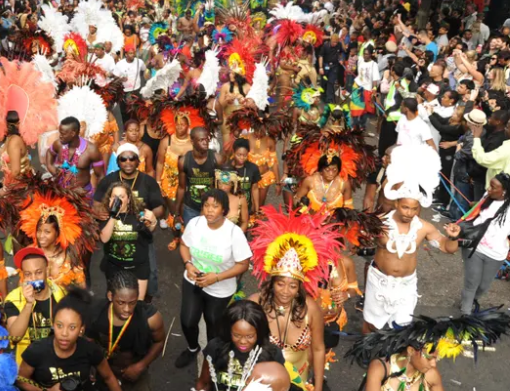For most of us, a crowd can be an alluring thing, because the desire to be among the throng seems to be innate.
對我們大多數人來說,聚集是一件誘人的事情,因為融入人群的欲望似乎是與生俱來的。
Gathering together for ritualistic celebrations – dancing, chanting, festivalling,
因儀式慶典聚集在一起——跳舞,吟頌,狂歡,
costuming, singing, marching – goes back almost as far as we have any record of human behaviour.
戲裝、唱歌、行軍——它幾乎可以追溯到有任何人類行為記錄的時代。
In 2003, 13,000-year-old cave paintings were discovered in Nottinghamshire that seemed to show "conga lines" of dancing women.
2003年,諾丁漢郡發現了1.3萬年前的洞穴壁畫,這些壁畫似乎展示了跳舞婦女的“康茄舞隊列”。
According to the archeologist Paul Pettitt, the paintings matched others across Europe,
據考古學家保羅·佩提特說,這些畫與歐洲其他國家的畫不相上下,
indicating that they were part of a continent-wide Paleolithic culture of collective singing and dancing.
這表明他們是整個大陸上集體唱歌和跳舞的舊石器文化的一部分。
In Barbara Ehrenreich's 2007 book Dancing in the Streets: A History of Collective Joy,
在芭芭拉·埃倫賴希在2007年出版的《街頭舞蹈:一段集體歡樂的歷史》中:
she draws on the work of anthropologists including Robin Dunbar to argue that dancing and music-making was a social glue
她引用了包括羅賓·鄧巴在內的人類學家的研究成果,認為舞蹈和音樂創作是一種社會粘合劑,
that helped stone-age families join together in larger groups than the family unit, to hunt and protect themselves from predators.
它們使得石器時代的家庭組成比家庭更大的群體,以捕獵和保護自己免受捕食者的傷害。

For Ehrenreich, rituals of collective joy are as intrinsic to human development as speech.
對埃倫賴希來說,集體歡樂的儀式就像說話一樣,是人類發展的內在本質。
More recent experiments by Dunbar and his colleagues have suggested that the capacity of singing together to bond groups of strangers shows
鄧巴和他的同事們最近的實驗表明,通過一起唱歌將一群陌生人凝聚在一起的能力表明,
it "may have played a role in the evolutionary success of modern humans over their early relatives".
它“可能在現代人類相對于其早期親屬的進化成功中發揮了作用”。
The power of crowds has long fixated religious and secular leaders alike,
群眾的力量長期以來都是宗教和世俗領袖們關注的焦點,
who have sought to harness communal energy for their own glorification,
他們試圖利用公共能量來美化自己,
or to tame mass gatherings when they start to take on a momentum of their own.
或者當群眾集會開始有了自己的勢頭時,壓制他們。
Ehrenreich records the medieval Christian church's long battle to eradicate unruly, ecstatic or immoderate dancing from the congregation.
埃倫賴希記錄了中世紀基督教會為根除會眾中不守規矩、狂熱或不道德的舞蹈而進行的長期斗爭。
In later centuries, as the reformation and industrial revolution proceeded, festivals, feast days, sports, revels
在后來的幾個世紀里,隨著宗教改革和工業革命的進行,各種節日、基督教節日、體育、狂歡,
and ecstatic rituals of countless kinds were outlawed for their tendency to result in drunken, pagan or otherwise ungodly behaviour.
還有無數種類的狂熱儀式因其容易導致醉酒、產生異教徒或其他不敬神的的行為而被宣布為非法。
Between the 17th and 20th centuries, there were "literally thousands of acts of legislation introduced which attempted to outlaw carnival and popular festivity from European life,"
在17世紀和20世紀之間,有“幾乎上千的立法法案被實施,試圖將狂歡節和流行的節日從歐洲生活中取締,”
wrote Peter Stallybrass and Allon White in The Politics and Poetics of Transgression.
彼得·史泰利布拉斯和阿隆·懷特在《違法的政治和詩學》中寫道。



